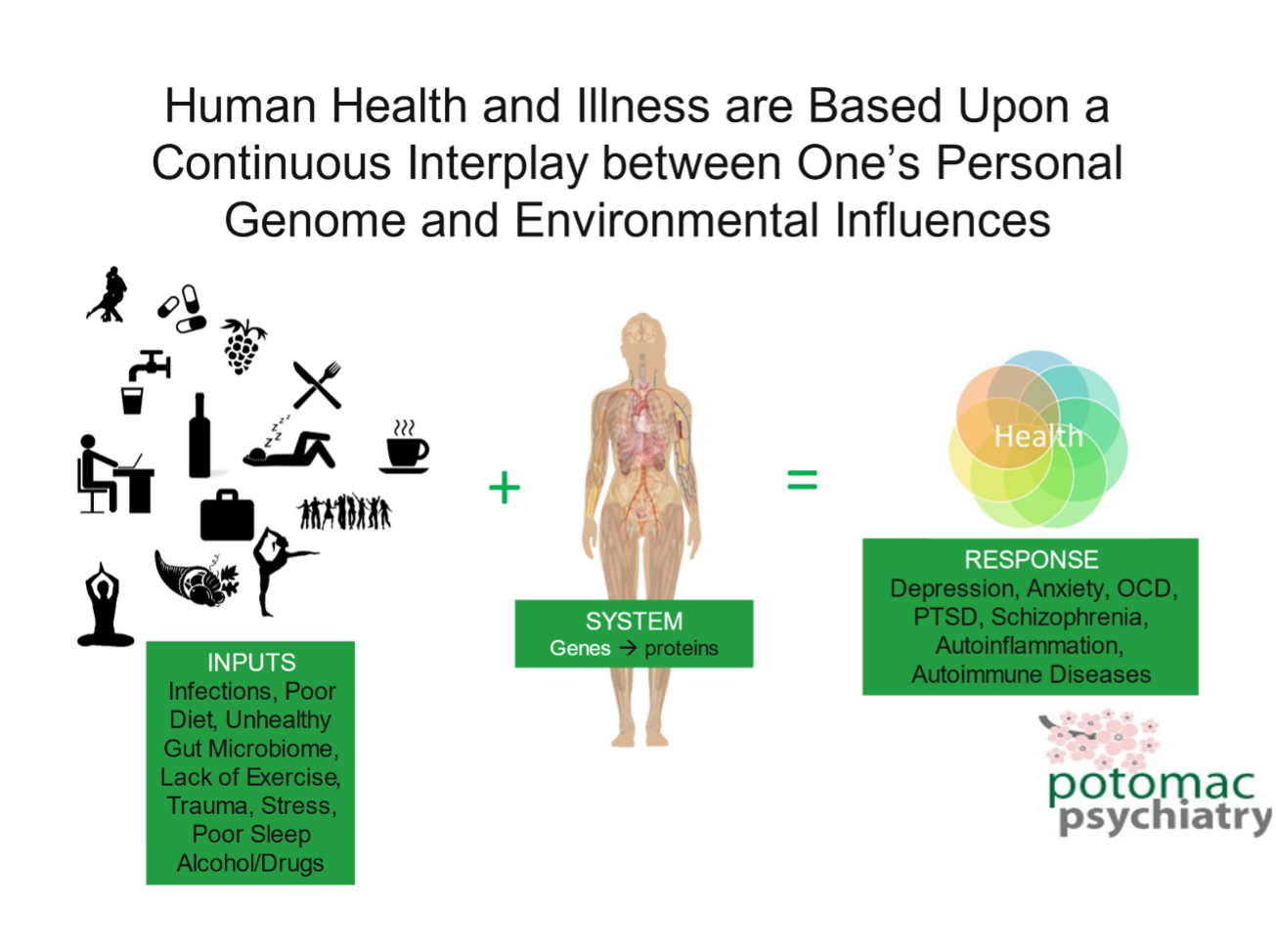How My Workplace Culture Affects My Genes and Mental Health: Navigating a "Toxic" Work Environment
- Home
- Blog

“Every genetic ‘illness’ is a mismatch between an organism’s genome and its environment. In some cases, the appropriate medical intervention to mitigate a disease might be to alter the environment.””
– Siddhartha Mukherjee, M.D.
The Impact of Workplace Culture on Mental Health
My Dear Reader,
In the intricate dance of genetics and environment, our workplace emerges as a pivotal stage where the culture can either elevate our well-being or plunge us into the depths of stress-induced malaise, anxiety, depression, and even brain fog. As we navigate through the corridors of our professional lives, it becomes increasingly clear that the environment we immerse ourselves in does not merely affect us psychologically but reaches deep into the fabric of our being, influencing gene expression in ways that have profound implications for our mental health. Genes “express themselves” by building proteins and other molecules essential for life and health. These environmental effects on gene expression are called “epigenetic.” Here is an infographic that illustrates this concept.

Nurturing vs. Toxic Work Environments
Central to this discussion are the so-called "orchid genes," such as COMT Met/Met, BDNF Val/Met, and SLC6A4 S/S. These genetic variations, akin to the delicate orchid that thrives under nourishing conditions, render individuals exquisitely sensitive to their environments. In nurturing, supportive settings, people with these variations can flourish spectacularly. However, in hostile or bullying cultures, the same individuals face heightened vulnerability to mental health challenges. This susceptibility is largely due to prolonged overactivation of the hypothalamic-pituitary-adrenal (HPA) axis (“fight, flight or freeze reactions”) which elevates adrenaline and cortisol levels in their bloodstream. It also brings about an intensified response of the fear center in the amygdala, painting a stark picture of the biological cost of toxic workplace environments.
Genetic Sensitivity and Work Stress
Further complicating this scenario are pro-inflammatory genetic variations, such as CRP, IL1 beta, and TNF alpha. These variations can predispose individuals to systemic and brain inflammation, particularly when faced with situations that strip them of their sense of control. Micromanagement, a common plague of modern workplaces, can serve as a trigger for these genetic predispositions, leading to increased systemic inflammation, brain inflammation, and, consequently, a higher incidence of mental health problems.
Adding to the orchid genes, several other genetic variants can be influenced by toxic work environments, potentially leading to higher rates of mental health problems through altered gene expression:
FKBP5: This gene regulates stress response sensitivity, with certain variants heightening the risk of stress-related disorders in toxic work settings by dysregulating the HPA axis.
NR3C1: Encoding the glucocorticoid receptor, polymorphisms in this gene can enhance sensitivity to stress and cortisol, making individuals more susceptible to anxiety and depression in hostile workplaces.
MAOA: Known as the "warrior gene," variants of MAOA can affect responses to environmental stressors, where certain alleles might contribute to mood disorders under continuous workplace stress.
5-HTTLPR: This variation in the serotonin transporter gene influences serotonin transport efficiency, with the short allele associated with an increased risk of depression following stressful life events, including those in toxic work environments.
Cultivate a Positive Workplace Culture for Mental Health
This interplay between genetics and environmental stressors underscores the critical importance of cultivating positive workplace cultures. Organizations that foster autonomy, respect, and psychological safety not only nurture the mental well-being of their employees but also tap into the vast potential of those who might otherwise wilt under the harsh glare of toxicity.
Leaving Toxic Workplaces for Mental Health
“Winners Quit.” They quit toxic workplace environments to achieve better mental health. I know this can be quite scary, given “the devil you know,” and oftentimes there are colleagues at work with whom you’ve formed deep attachments, who you may be hesitant to leave behind. However, “Culture is the New Compensation” and more people than ever before are leaving destructive workplace environments to seek those where they can grow and thrive.
As leaders and colleagues, we hold the power to influence the epigenetic expression of genes inside those around us, whether it is at work or at home. By championing a culture of support and understanding, we can mitigate the adverse effects of stress and inflammation, paving the way for all individuals, regardless of their genetic makeup, to reach their fullest potential.
In conclusion, the workplace is more than a physical space—it is an environment that can significantly impact our gene expression and mental health. Recognizing the vulnerability of individuals with certain genetic predispositions is a step toward creating healthier, more inclusive workplaces. Let us commit to one another that we will foster environments where every employee, much like the orchid, can find the conditions to thrive and blossom into something beautiful, not merely survive.
Be Well,
Dr. Bruce
.png?width=144&height=144&name=Untitled%20design%20(34).png)



